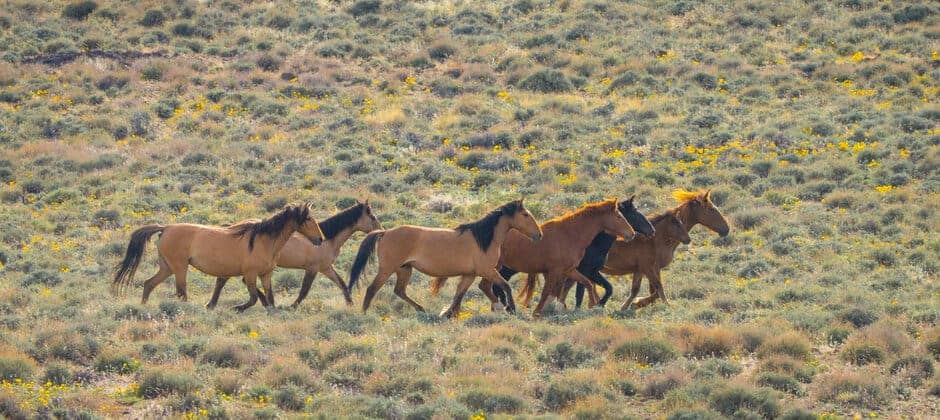Share this article
TWS submits testimony on wild horse and burro management
In written testimony to the National Wild Horse and Burro Advisory Board, which met in early October, The Wildlife Society stressed the need for reducing populations of federally managed, free-roaming horses and burros.
The National Wild Horse and Burro Advisory Board, a federal advisory committee composed of stakeholders representing diverse interests, provides recommendations to the U.S. Forest Service and Bureau of Land Management on carrying out federal responsibilities under the 1971 Wild Free-Roaming Horses and Burros Act.
The Wildlife Society stated its support for the National Wild Horse and Burro Program and its mission to ensure healthy rangelands, while emphasizing concern about the lack of progress in substantially reducing on-range populations.
“The overpopulation of horses and burros on public lands has directly contributed to the degradation of rangeland ecosystems and hampered the ability of wildlife professionals to sustainably manage and conserve native wildlife populations,” TWS stated in its testimony. “For these reasons, The Wildlife Society encourages the Board to support and prioritize science-based management solutions to reduce populations to ecologically sustainable levels.”
On-range populations currently exceed 82,000, according to the BLM, despite a population goal of less than 27,000. This goal, known as the Appropriate Management Level, is set to achieve a “thriving natural ecological balance” on rangelands as required by the 1971 law.
The BLM permanently removed a record 19,011 horses and burros from overpopulated herds in Fiscal Year 2022. As a result, on-range populations are down from the 2020 record of 95,114. The large number of removals brought the off-range population, held in agency-managed and privately contracted holding facilities, up to a staggering 78,000 animals.
The Bureau of Land Management has tried to decrease the number of individuals in long-term, off-range holding facilities through the implementation of the Wild Horse and Burro Adoption Incentive Program. The Wildlife Society’s testimony asked for the advisory board to support the agencies’ continuation of efforts to remove horses and burros from public lands, while also pursuing more aggressive on-range fertility control and sterilization efforts. As noted in TWS’ testimony, the evaluation and application of long-term fertility control alongside gathers can allow for a reduction in population within a meaningful timeframe to reduce the growing damage to rangeland ecosystems.
At the conclusion of the meetings, the advisory board released a set of six recommendations, including one encouraging measurable objectives outlining fertility control practices and its use with each gathering operation. Other recommendations focused on organizational changes to address the long-term budgeting needs of the Wild Horse and Burro program, and building local partnerships to ensure adoption compliance and support.
In response to ongoing concerns about wild horse and burro populations, lawmakers in the U.S. House of Representatives recently introduced the “Wild Free-Roaming Horses and Burros Protections Act of 2022.” The legislation would limit the BLM’s currently available management tools by requiring the use of all other population control options before roundups and removals. The bill also aims to place restrictions on the BLM’s administration of the Adoption Incentive Program alongside other avenues that have allowed the BLM to move horses out of off-range facilities. The bill is awaiting consideration in the U.S. House Natural Resources Committee.
Read TWS’s Issue Statement on Feral Horses and Burros in North America
Header Image: Wild horses on Fox Hog herd management area. Credit: Jesse Pluim/BLM








